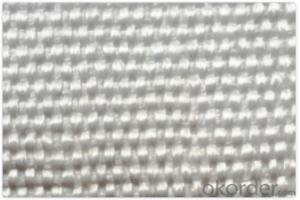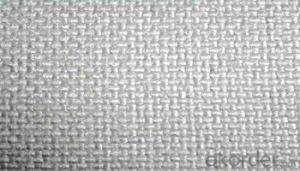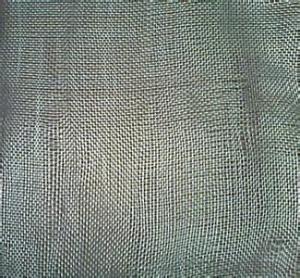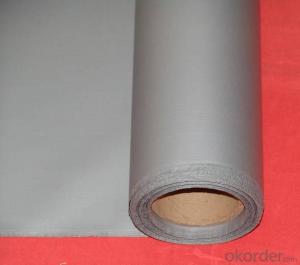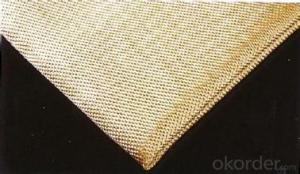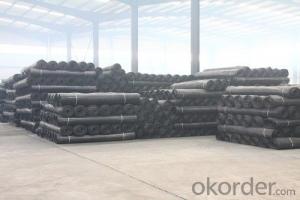High Temperature Thermal Insulation Texturized Fabric
- Loading Port:
- Ningbo
- Payment Terms:
- TT OR LC
- Min Order Qty:
- 500 m²
- Supply Capability:
- 300000 m²/month
OKorder Service Pledge
OKorder Financial Service
You Might Also Like
Description: Texturized glass fiber cloth is a soft, flexible cloth manufactured from continuous filament texturized yarns. It is an ideal replacement for asbestos product used for thermal insulation and heat protection. It has low coefficient of thermal expansion and is suitable for temperature up to 550℃
Features: Excellent insulation property, High working temperature 550℃, Tight yarn construction, High strength and abrasive
Application: Insulation blanket, Insulation jacket, Further processing
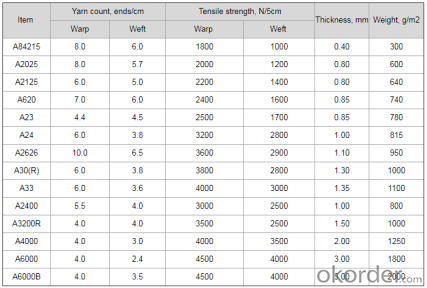
PRICE: USD2 per square meter
UNIT: square meter
MOQ: 500square meters
Weight: 300gsm-2000gsm
Thickness: 0.4mm-3mm
Roll length: customized
Size: can be customized
Supply ability: 300000 meters per month
Packaging: Rolls packed In cartons loaded on pallets or according to customers' requirements.
Lead time: 7-30 days
- Q:What are the different colors available for fiberglass fabric?
- The different colors available for fiberglass fabric are typically neutral shades such as white, gray, or black. However, some manufacturers may offer a limited range of custom colors for specific applications.
- Q:Can fiberglass fabric be used for making bookbinding material?
- Yes, fiberglass fabric can be used for making bookbinding material. It is a durable and flexible material that can provide strength and protection to book covers, especially for heavy-duty or long-lasting books. Its resistance to tearing and moisture makes it suitable for bookbinding applications.
- Q:Can fiberglass fabrics be used for insulation in electrical systems?
- Fiberglass fabrics are capable of being used for insulation in electrical systems. Due to its exceptional thermal and electrical insulation properties, fiberglass is a widely utilized material for insulation. It possesses non-conductive characteristics, signifying its incapability to conduct electricity. This quality renders it perfect for incorporation in electrical systems necessitating insulation to avoid the leakage of electrical current or short circuits. Moreover, fiberglass fabrics exhibit remarkable resistance to high temperatures, which renders them suitable for utilization in electrical systems that generate heat. The fabric form of fiberglass facilitates effortless installation and wrapping around electrical components, thereby furnishing a protective barrier against electrical shocks and preventing the transfer of heat. To summarize, fiberglass fabrics represent a dependable and efficient option for insulation in electrical systems.
- Q:Two, fat and PVC paste resin paste into the sizing, coated on glass fiber cloth, so that after baking, how do not shrink?
- Do not grind finer, the particles are too small at room temperature, often because of excessive solvent and paste viscosity high.
- Q:How is fiberglass fabric used in the production of heat shields?
- Fiberglass fabric is commonly used in the production of heat shields due to its exceptional thermal insulation properties. Heat shields are designed to protect various components or structures from heat damage or excessive temperatures. Fiberglass fabric acts as a barrier between the heat source and the protected area, preventing the transfer of heat and reducing the risk of damage. The use of fiberglass fabric in heat shields is beneficial for several reasons. Firstly, fiberglass is a non-combustible material, meaning it does not burn or release harmful gases when exposed to high temperatures. This quality is crucial in heat shield applications, as it ensures the fabric remains intact and effective even under extreme heat conditions. Additionally, fiberglass fabric has excellent thermal insulation properties. It has a low thermal conductivity, meaning it does not conduct heat efficiently. This property allows the fabric to effectively trap and slow down the transfer of heat, preventing it from reaching the protected area. Fiberglass fabric is also highly flexible and lightweight, making it easier to incorporate into various heat shield designs. It can be easily molded or shaped to fit different applications, ensuring a proper and secure fit. Its lightweight nature also minimizes the overall weight of the heat shield, which is particularly advantageous in industries where weight reduction is crucial, such as aerospace. Furthermore, fiberglass fabric is resistant to many chemicals, moisture, and corrosion. This resistance makes it suitable for use in various environments and industries, including automotive, aerospace, industrial, and marine applications. In summary, fiberglass fabric is used in the production of heat shields due to its non-combustible nature, excellent thermal insulation properties, flexibility, lightweight design, and resistance to chemicals and moisture. Its incorporation into heat shield manufacturing ensures the effective protection of components or structures from heat damage, making it a highly valuable material in this application.
- Q:Can fiberglass fabric be used for insulation in nuclear power plants?
- Yes, fiberglass fabric can be used for insulation in nuclear power plants. Fiberglass is a commonly used material for insulation in various industries, including nuclear power plants. It offers several advantages such as excellent thermal resistance, fire resistance, and low thermal conductivity. These properties make it suitable for insulating equipment and components in nuclear power plants where high temperatures and potential fire hazards are present. Additionally, fiberglass is also resistant to moisture, chemicals, and radiation, which are significant considerations in the nuclear industry. However, it is important to note that the specific application and required safety standards should be taken into account when selecting and installing insulation materials in nuclear power plants.
- Q:Can fiberglass fabrics be used for reinforcement in electronic devices?
- Yes, fiberglass fabrics can be used for reinforcement in electronic devices. Fiberglass fabrics are known for their high strength, durability, and electrical insulation properties, making them suitable for various applications in the electronics industry. These fabrics can be used to reinforce electronic components, such as circuit boards, to improve their mechanical strength and prevent damage from vibrations or impacts. Additionally, the electrical insulation properties of fiberglass fabrics make them ideal for reinforcing cables and wires, protecting them from abrasion and enhancing their overall performance and longevity. Overall, fiberglass fabrics provide an excellent solution for reinforcing electronic devices and components, ensuring their reliability and longevity in various operating conditions.
- Q:Can fiberglass fabric be used for reinforcement in mining tanks?
- Yes, fiberglass fabric can be used for reinforcement in mining tanks. Fiberglass fabric is known for its strength, durability, and corrosion resistance, making it an ideal material for reinforcing structures in harsh environments such as mining tanks. It provides reinforcement to prevent leakage, enhance structural integrity, and withstand the demanding conditions typically found in mining operations.
- Q:Can fiberglass fabric be used for making bags or backpacks?
- Yes, fiberglass fabric can be used for making bags or backpacks. It is a durable and lightweight material that provides excellent strength and resistance to tearing.
- Q:Can fiberglass fabric be used for insulation in construction projects?
- Yes, fiberglass fabric can be used for insulation in construction projects. Fiberglass fabric is made from woven glass fibers, which have excellent thermal insulation properties. It is commonly used as an insulation material in walls, roofs, and floors to prevent heat transfer and improve energy efficiency in buildings. The fabric is lightweight, flexible, and easy to install, making it a popular choice for construction projects. Additionally, fiberglass fabric is resistant to fire, moisture, and chemicals, making it a durable and long-lasting insulation material.
1. Manufacturer Overview |
|
|---|---|
| Location | |
| Year Established | |
| Annual Output Value | |
| Main Markets | |
| Company Certifications | |
2. Manufacturer Certificates |
|
|---|---|
| a) Certification Name | |
| Range | |
| Reference | |
| Validity Period | |
3. Manufacturer Capability |
|
|---|---|
| a)Trade Capacity | |
| Nearest Port | |
| Export Percentage | |
| No.of Employees in Trade Department | |
| Language Spoken: | |
| b)Factory Information | |
| Factory Size: | |
| No. of Production Lines | |
| Contract Manufacturing | |
| Product Price Range | |
Send your message to us
High Temperature Thermal Insulation Texturized Fabric
- Loading Port:
- Ningbo
- Payment Terms:
- TT OR LC
- Min Order Qty:
- 500 m²
- Supply Capability:
- 300000 m²/month
OKorder Service Pledge
OKorder Financial Service
Similar products
New products
Hot products
Hot Searches
Related keywords
